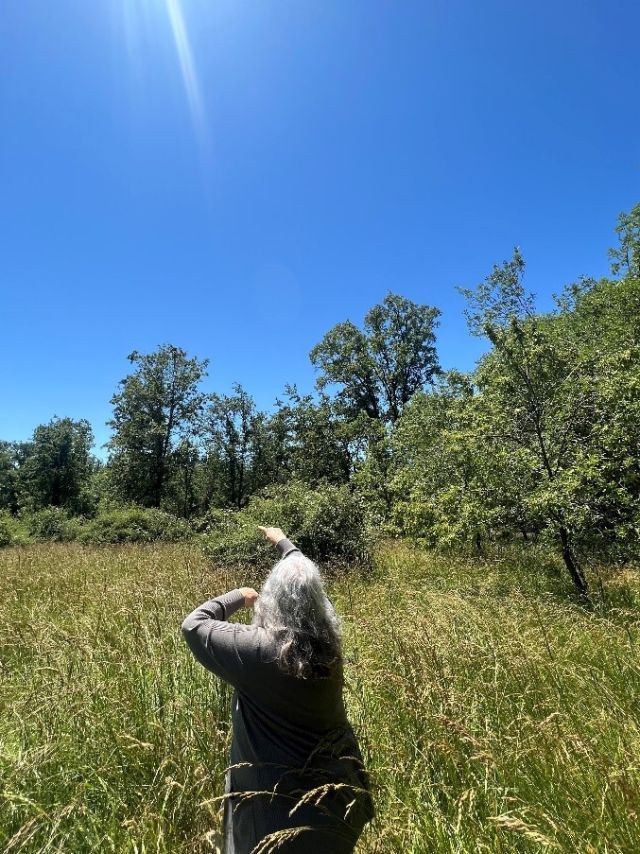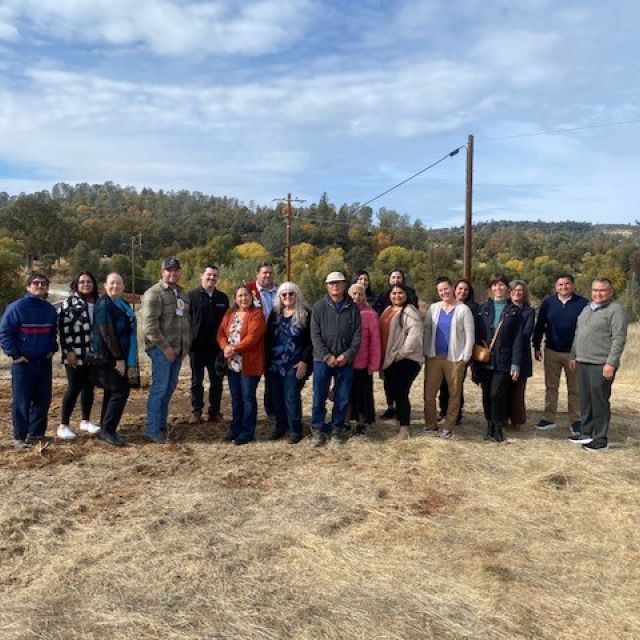In the 1950s, Congress passed an under-the-radar act, known as Public Law 280, effectively terminating select Native American tribes. This meant that after generations of genocide, forced relocation, and assimilation, tribes slated for termination would have all land titles and governance claims dissolved.
California tribes, along with those in five other states—Alaska, Wisconsin, Minnesota, Nebraska, and Oregon—were subjected to termination during a 15-year period. Seventeen tribes of different California Pomo bands and rancherias were promised infrastructure and education in return for their trust land titles.
Despite the crushing impact of displacement and loss of assets, California tribes today show solid resolve and a spirit of resilience as they seek to rebuild their economies and stabilize their communities through new housing development and through the lens of their Tribal sovereignty. Enterprise is honored to be a thought partner in this work and inspired by the dedication of California Tribal housing and community development practitioners.
California Tribes
Enterprise’s Tribal Nations and Rural team, with colleagues from Enterprise’s Northern California office, visited Native partners in Ukiah and Laytonville and learned more about the struggles still facing indigenous tribes in the state today.
California is home to 109 federally recognized tribes, and as many as 45 tribes still fighting for recognition. The state also has the largest number of Native Americans of any other state according to the last Census. The tribes are extraordinarily diverse, and upon first contact with Europeans the region now known as California spoke as many as 64 distinct languages.
Recently, our team visited several tribes in rural areas of Northern California. These tribes were left with limited terrain to build on, with some having dedicated trust lands that only spanned a few acres. This is a legacy of the rancheria system breaking up and re-forming tribal land. That history, combined with the complex nature of housing policy in the state today, contribute to a slew of challenges facing tribes as they work to build housing in Native communities.
It's important to acknowledge the nuances and challenges of developing housing in rural Tribal areas, which include: increased infrastructure needed due to lack of access to public hookups for sewer and water, and an aversion to the higher density needs of urban communities due to a preference for space, privacy, and Tribal preference exercised under Tribal sovereignty.
Land Back for Land Taken
Returning historic title to tribes also ties directly into their ability to provide affordable housing and a place for their community to live. The movement towards “land back”—or a call to respect tribal sovereignty and restore aboriginal land holdings—has roots in California.
Ukiah is the home of indigenous activist Tilly Hardwick, a member of the Pinoleville Pomo Rancheria. In 1979, she filed a suit – Tilly Hardwick et al. vs. the United States – that would eventually help reverse the termination policy for Pinoleville and 17 other tribes.
The lawsuit stated that Tilly and other tribal members could not access title to their own land, as well as the benefits the government promised such as providing plumbing or education. Hardwick had grown up hearing stories from her family of the bloody island massacre where the U.S. Army killed 60-200 men, women, and children who had formerly been enslaved.
California tribes are not just fighting to restore what was taken centuries ago from Native communities, but from as little as a generation ago. Tribes today still feel the strain of their land title being called into question as they strive to build community.
Legacies of termination are still felt in these Native communities today, as well as the spirit of resilience of prior generations.

Cahto Walk
Enterprise is partnering closely with the Cahto Tribe of Laytonville Rancheria to help build out permanent supportive housing. The Tribal Nation team’s trip to California included a two-day visit with the tribe to develop community understanding of the permanent supportive housing and trauma-informed housing model, and in turn to understand the history and culture of the tribe.
During that time, we were honored to be invited to visit the ancestral lands for the tribe, meet many families and new friends, and attend the Cahto Coast Walk. This tradition includes a 10 mile walk with the whole community, neighboring tribes, and guests, and we walked alongside them in the misty, pine-scented trail to the coast.
Housing the Future
California Natives have a difficult road ahead of them as they face challenges that include higher construction costs, NIMBYism combined with racial prejudice, regulatory obstacles towards rehab, and lack of infrastructure in rural areas.
Tribal housing leaders are hopeful for new housing solutions, even after the expiration of the Tribal HomeKey set-aside this year. One key policy Enterprise is supporting with the leadership of California Natives is for SB 18, the Tribal Housing Reconstitution and Rehabilitation Act.
This would establish a Tribal Housing Grant Program with annual allocation to the benefit of housing programs for Indian families and tribes—the first of its kind in California, with procedural exemptions that acknowledge tribal sovereignty. Support from individuals and advocacy organizations in California is critical to make this dream a reality. Enterprise strongly believes in the good this legislation can accomplish for California’s tribes and is here to support the process.
Ocean views
After ten miles of walking side-by-side with the Cahto tribe during their annual coast walk, we finally crested over the last hill and the curve in the road gifted us the first view of the Pacific Ocean. This is the view that Cahto peoples would have been greeted with at the beginning of summer for generations as they moved from inland winter camps to their summer fishing grounds. The sounds of the oceans and the distant drums as the ceremonial dances began were reminders of the connection to the past, and the home and community that awaits us on the other side.


